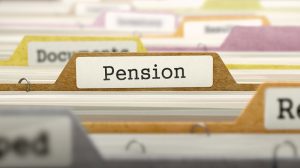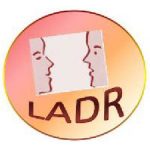 Your pension is likely to be a valuable asset, and, if you are married, or in a civil partnership, one that must be included in ‘joint assets’ to be shared when you divorce or dissolve your civil partnership.
Your pension is likely to be a valuable asset, and, if you are married, or in a civil partnership, one that must be included in ‘joint assets’ to be shared when you divorce or dissolve your civil partnership.
However, the subject of pensions during divorce (for ease of reading, this term also includes dissolution of civil partnership) is complex, and one which many people do not understand. Often, when making their financial declarations during divorce, people forget to think about their pensions. Here we consider how a pension can be dealt with when making the financial arrangements as part of a divorce.
There are several different types of pension scheme:
- State pensions
- Occupational pensions
- Final salary pensions
- Stakeholder pensions
- Company and work schemes
- Personal and private schemes
- Money purchase schemes
- Self–invested personal pensions (SIPPs)
Valuing pensions on divorce
All pensions, apart from your state pension, can be shared if you divorce. Overseas pensions cannot be shared by a UK court order.
When divorcing, the pension holder will need to get a cash equivalent transfer value (CETV) on their pension. If you are the pension holder, this can only be done by you and not by your ex-spouse (for ease of reading, this term also relates to ex-civil partner) and vice versa.
In order to ensure that the true value of the pension is taken into consideration, it is vital that someone who is experienced in dealing with pension sharing, such as a Family Matters’ expert, then considers this valuation, as different types of pension schemes use different methods of producing the CETV. For example, the CETVs of some pensions are given at their transfer value, whilst others may represent the actual fund value. If the pension holder has a final salary pension, calculation of the CETV scheme can be very complex indeed as it will involve some projection of what the holder’s future salary, and the pension fund, will be. If necessary Family Matters will suggest that an actuary (an expert in pensions) looks at the pension and gives advice
Sharing the pension pot
The pension pot is a term used to talk about the pensions of both people combined. There are three ways of dividing a pension pot. These are:
Pension sharing
This is where a percentage of your pension is given to your ex-spouse (or your ex-spouse will give a percentage of their pension to you). Your pension assets are split immediately and the amount your ex-spouse receives will be put into a pension scheme of their own. The amount of the pension you each receive from each other’s pensions will be shown as a percentage (in England and Wales – it can be shown as an amount in Scotland) of the transfer value. The court will provide a pension sharing order as evidence of this. This method of pension sharing provides a clean break, but you must get a clean break order from the court to ensure this.
Pension offsetting
This is where you keep your pension in return for your ex-spouse keeping an asset, or assets, of the same, or similar, value (or you keep the asset/s in return for your ex-spouse keeping their pension). For example, once valued, you may keep your pension and your ex-spouse might keep the family home, if it is of a similar value. This option provides a clean break, but you must get a clean break order from the court to ensure this
This a might not provide the best option where the pension pot is large and there are not enough assets of equivalent value. In these situations, it may be better to consider pension sharing or pension attachment orders/earmarking.
Pension attachment orders
This was previously known in England and Wales as pension earmarking – a term that is now only used in Scotland.
This is where some, or all, of your pension is paid to your ex-spouse when you start to draw it (or vice versa).
Payments can be made from the pension income or the pension commencement lump sum (PCLS). (In Scotland, payments can only be made from the lump sum.)
This type of pension agreement does not provide a clean break as you (the pension member) still have control over the pension and your ex-spouse is still reliant upon your retirement. Also, these types of orders can be varied before they come into action. In fact, courts prefer clean-break agreements wherever possible, as when attachment orders are in place, the recipient could receive less than expected, or nothing, if the pension owner dies before they retire; retires early; stops making payments into the pension or dies after you have retired. Also, the recipient does not get any income from the pension until pension owner actually retires, which can create further complications.
Deferring pension sharing
You can arrange to defer pension sharing if one person has already retired and is already receiving a pension and the other one is not entitled to receive a pension for a number of years. You can also defer payment of your pension lump sum. A court will provide an order requiring you to pay it and it will then be your responsibility, not that of your pension company, to pay the amount when it is due.
More than one divorce?
It is possible for your ex-spouse to have a pension sharing order made against your pension, even if it has been subject to a previous pension sharing order after a previous divorce. However, you will need to take advice on this issue as certain criteria apply.
What happens if you divorced before the 2015 amendments?
Since 2015, it has been possible for you to take your whole pension as a lump sum, rather than 25% of the value of the pension, as had previously been the rule.
If you divorced before this date, and you have earmarking or attachment orders against your ex-spouse’s pension, you should have the wording of those orders checked by a solicitor to ensure that you are covered if your ex-spouse decides to take their whole pension as a lump sum. If the wording does not cover you, you may need to seek an amendment to the order.
How can Family Matters help?
Our mediators are trained in all issues relating to pensions and can help you ensure that you understand the implications of sharing pensions.
We are able to give impartial advice to both people so that you can agree a way forward based upon informed choices.
We work with financial and pension advisers so that you can obtain advice from experts and make decisions not just for now, but also for the future.
When agreement is reached the mediator will write up a document called a memorandum of understanding which explains the reasons for the decisions made and which can be taken to a solicitor to be made into a legally binding court order. This means that you can make the best use of a legal advisor if you have one .
It is very important following a divorce to obtain a final financial order as, until you do, you will be financially tied indefinitely.
Mediation offers a clear process, conducted by experts, that will lead to agreement about pensions. Call Family Matters or find out more on our website.



